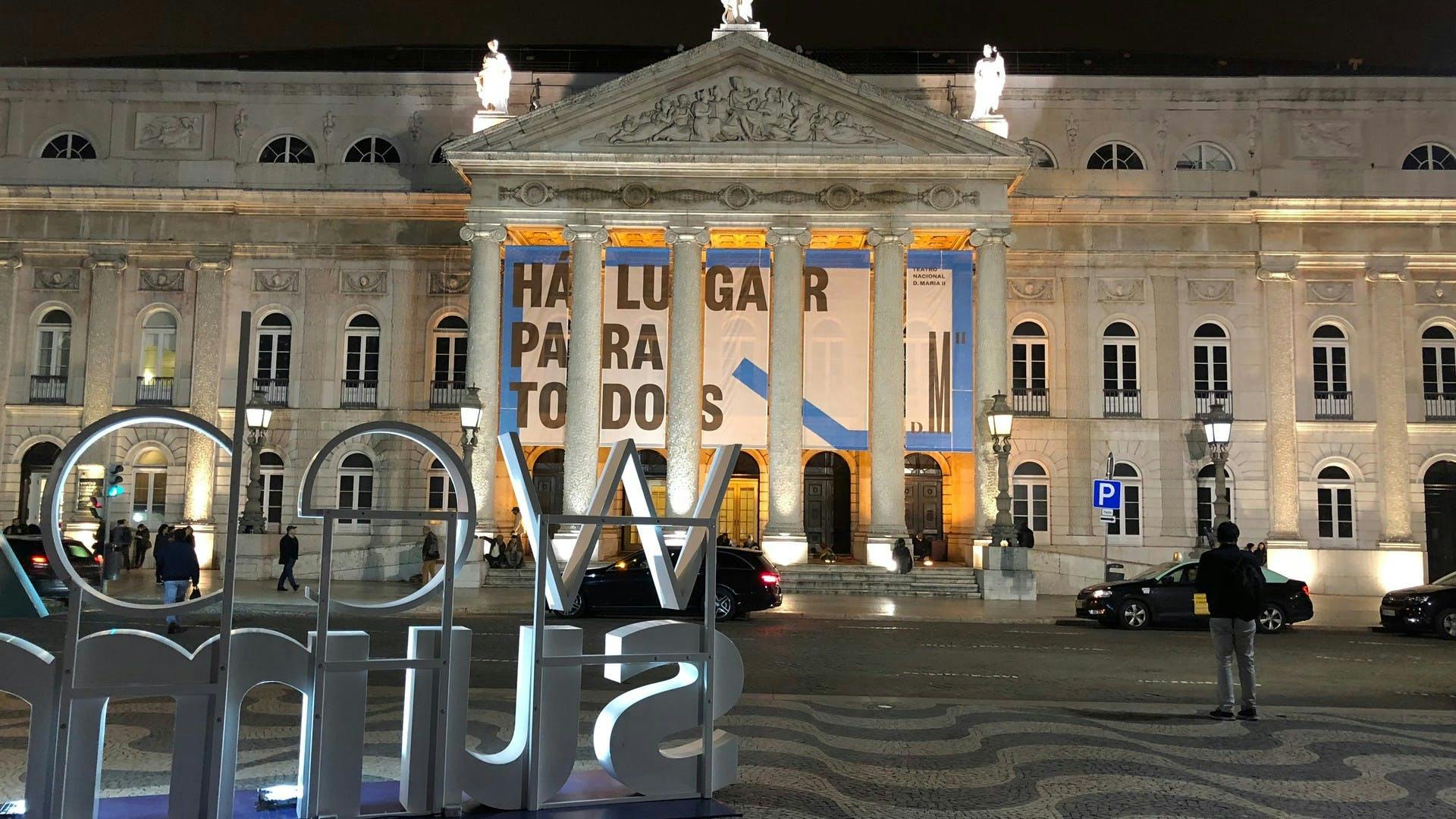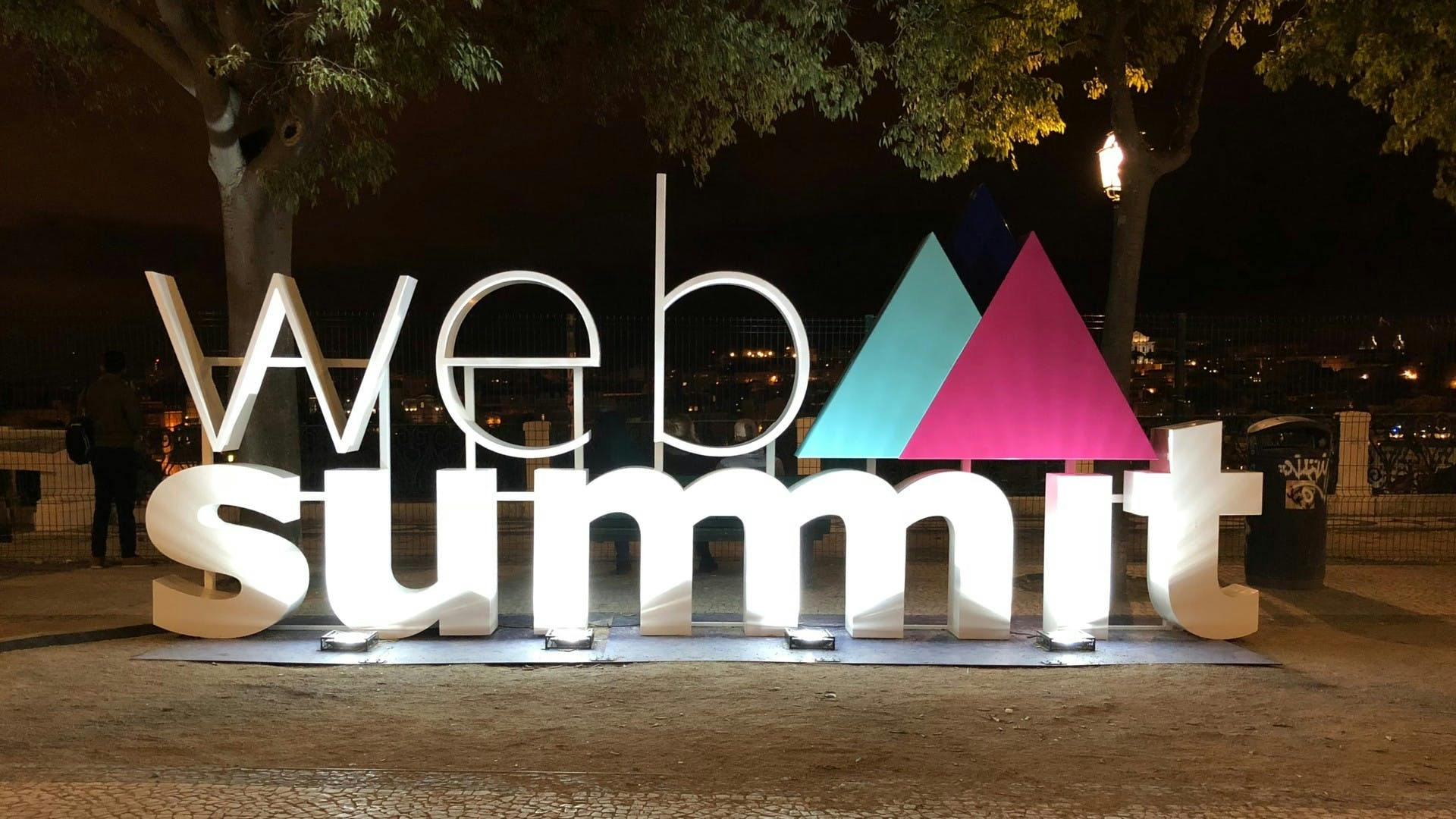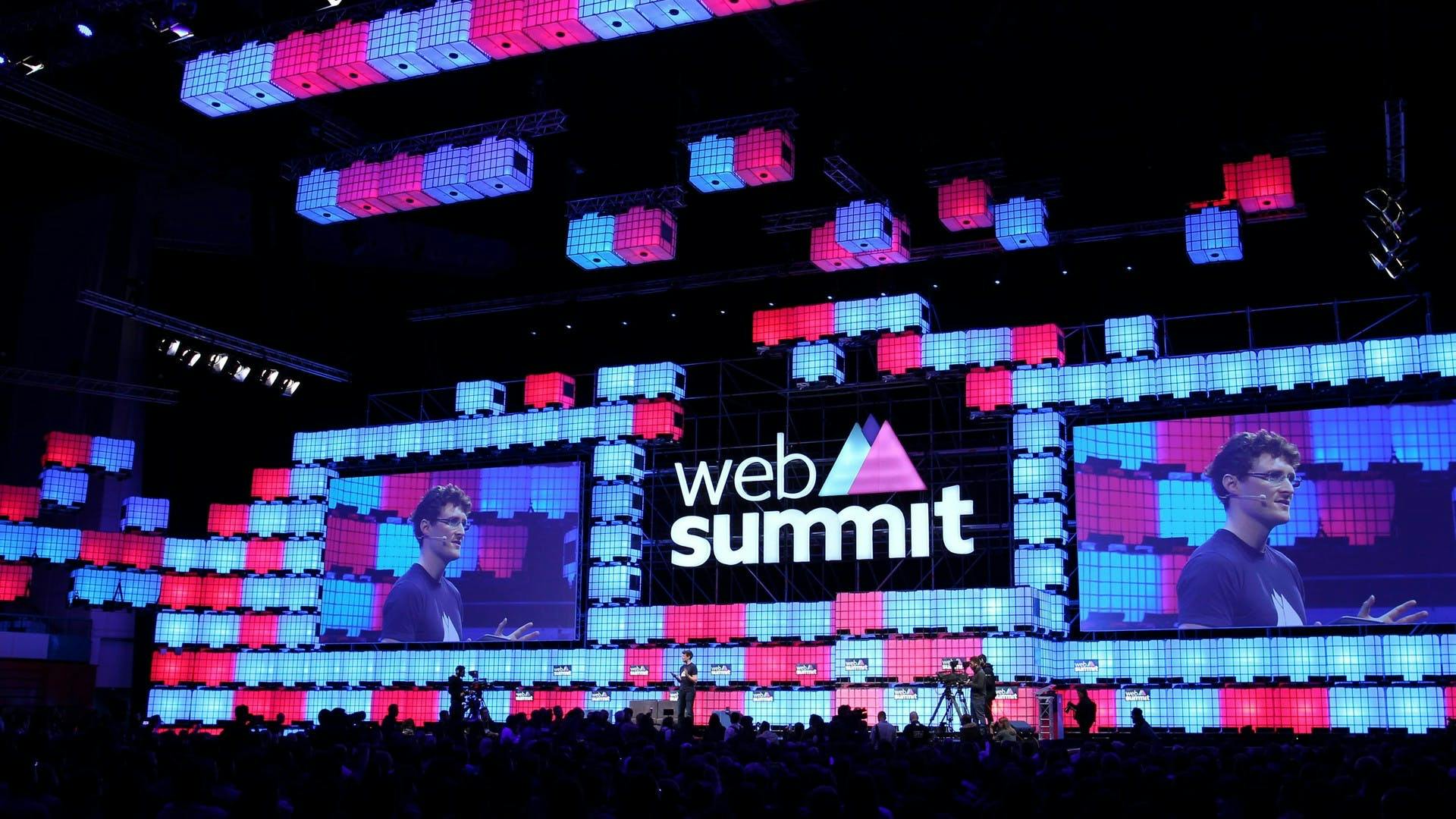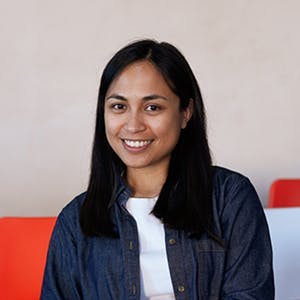A newbie’s impressions and roundup of Web Summit 2018
ven though Startup Guide’s editor-in-chief, Shelley Pascual, had never previously been to Web Summit before, she had an idea of what she was in for. And while she wasn’t able to stay for the entire length of Europe’s biggest tech conference this year, she still managed to hear a few interesting talks and collect some thoughts and insight.

A "Web Summit" sign at Rossio Square in Lisbon. Photo: Shelley Pascual
Even before I set foot in the vicinity of the Altice Arena and the FIL exhibition complex in Lisbon for Web Summit 2018, an annual tech conference which was born in Dublin in 2009, I’d been warned by others to expect it to be crowded and overwhelming.
In the past eight years, the conference has grown from 400 attendees to just over 59,000 from more than 150 countries last year. Over 70,000 people are believed to have attended this year’s edition, The Portugal News reports, making it the biggest in the history of the conference.
Accordingly, I had anticipated the crowds, though you never really know what that experience is like until you’re in an area bumping elbows with tens of thousands of other people (claustrophobes, take note). But more on that a bit later.
Opening night
My Web Summit experience began exactly a week ago on November 5th, which is when opening night festivities took place on center stage in the Altice Arena. I attended with my colleague Miriam, a fellow member of the content team at Startup Guide.
With our media passes in hand, our plan of action was to listen to as many talks as we could to gain insight and collect quotes for upcoming articles. We also planned on live-tweeting and posting stories on Instagram about the conference.
Cofounder and chief executive of Web Summit, Paddy Cosgrave, kicked off the event, calling it “the world’s largest gathering of entrepreneurs.” What began in Dublin with a handful of team members eight years ago has become what Forbes describes as “the best tech conference on the planet.”
Another notable speaker during opening night talks is the inventor of the world wide web, Tim Berners-Lee, who expressed his disappointment in how some people have been using what he created. He announced a new campaign which promotes principles for improving the internet and fighting back against everything from privacy concerns to hate speech.
A representative from one of the most valuable companies in the world, Lisa Jackson, vice president of environment, policy and social initiatives at Apple, also took to the stage. “I’m here today to tell you all that there’s no conflict between a healthy planet and a healthy bottom line,” she said at a talk about businesses doing well by doing good.
Lisa’s message resonated with me, as my colleagues and I have been gathering research for a book we plan to publish in the future called Ideas For a Better Future, which will look at startups across the globe that are working toward achieving the UN’s Sustainable Development Goals.
Talks for the evening wound up with remarks from António Costa, the Prime Minister of Portugal, who welcomed visitors of Web Summit to Lisbon but also invited them to live, work and invest in the country.
This made me reflect on what I’d gathered as a visitor in Lisbon in the days leading up to Web Summit. Through chats with my Uber drivers and colleagues who live in the Portuguese capital, I’d found out that there are challenges to finding available flats. Additionally, locals have had to move out of their homes due to rising rents.
While it’s great news to hear that Web Summit will be staying in Lisbon for another ten years, adding to the three that have already taken place in the sunny capital, it seems to me that new residents to the city will only serve to exacerbate Lisbon’s housing issue (unless the government comes up with a solution asap).
After relocating to Lisbon from Dublin in 2016, Web Summit helped Lisbon recover from its 2011-2016 debt crisis and has increased its profile. But now it comes with a hefty price tag. By agreeing, in part, to pay Web Summit $12.7 million annually, Lisbon beat out its contenders as host of the conference until 2028, according to Venture Beat.
The first full day
It wasn’t until the following day, November 6th, that I had the chance to see for myself how vast the grounds of the conference actually were. The FIL complex is home to four pavilions which comprise the main exhibition center in Portugal. The Altice Arena is moreover the country’s largest indoor arena.
Miriam and I had both diligently downloaded the Web Summit app and using it, packed our schedules with back-to-back talks for the entire day. We quickly found out though that it was going to be impossible to attend all of the ones we had initially chosen.
For instance, after listening to the first talk which took place on center stage in the Altice Arena, the second session I went to – which was located on one of the stages in pavilion four – had ended by the time I arrived.
I clearly hadn’t factored in that it would take some time to get from one side of the conference to the other, given the size of the entire space and tens of thousands of other people trying to get from point A to point B too.
I only found out as I was writing this piece that Web Summit survival guides exist online to help people get through it. Some entrepreneurs, like Andriy Bas, who wrote on Medium last year about his Web Summit experience, advises against attending at all.
While I don’t agree with all the points Andriy mentions in his piece, I do agree that the conference can suck the energy out of you. By the end of the day, the laps I’d done running from talk to talk (and trying to scarf down lunch in between) had admittedly left me exhausted.
On top of that, each talk is only about fifteen to twenty minutes long, which arguably isn’t enough time to really delve into a topic where a handful of speakers are present.
Contributor to the Irish Times, Karlin Lillington, perhaps nails it on the head when she wrote in 2015 that “productive people will have set up key meetings in advance.” In other words, those that tend to be successful attend Web Summit knowing what they want to get out of it.
“I think a big part of the problem is, inexperienced founders arrive and expect things to happen without having to put much prep work into attending,” Karlin wrote. But as much as Web Summit can be frustrating, Karlin thinks that it can also be fantastic.
“No other event will give you so many significant speakers in the (broadly defined) tech sector, nor as useful an opportunity to network,” she wrote. On the topic of networking, I connected with a few people via the Web Summit app and had planned on meeting them, but in the end our schedules just didn’t allow for it.
Meanwhile, Miriam was hit on by an attendee who told her to call him while handing her his business card. Since Paddy Cosgrave himself admitted that the conference is “a massive dating festival,” and colleagues told us that their friends have had similar encounters, this wasn’t terribly surprising.
Of the talks I did manage to see on the first full day, the one with whistleblower and former director of research at Cambridge Analytica, Christopher Wylie, stands out.
Half a year after revealing to the world details of Cambridge Analytica’s misuse of Facebook data in political campaigns, Christopher said that no one had yet been properly held accountable in spite of the scandal. He went on to blast knowledge regulators for knowing far too little about tech.
One of the last talks I saw that day was equally fascinating and inspiring. Given by former photojournalist and war correspondent, Santiago Lyon, the talk was about the power of visual culture. Now the director of editorial content at computer software company Adobe, Santiago said that nowadays, anyone can be a storyteller and a publisher.
He also pointed out that in light of this, we have to get personal if we want to break through the noise. “Social media is so much more than just a tool,” Santiago said. “It simultaneously reflects the world around us and it also inspires us.”
Web Summit 2019
My time in Lisbon wound down the following day, November 7th, as this was the day I had to fly back home to Berlin. This meant that I unfortunately missed two more days of the conference. To be honest, I wasn’t too disappointed about it, as I’m able to watch many of the discussions I missed in the comfort of my own home on Web Summit’s YouTube channel.
All in all, I think the conference was definitely worth visiting and seeing for myself with my own eyes. As as person in the media though, unless I’m able to nail a high-profile interview with someone there, next year I can watch Web Summit’s livestream of the talks.

A "Web Summit" sign at São Pedro de Alcântara in Lisbon. Photo: Shelley Pascual
And since mainstream media cover the interviews with the big names and the summit’s organizers send out press releases of many of the conference’s happenings, I don’t have to actually physically be there to be in the know.
Having said that though, being at the summit in the flesh can be really useful for startups looking to meet significant people such as investors. This brings to mind several ideas for articles we can produce next year, including our very own guide of some sort to surviving Web Summit 2019.
In the meantime, there are loads of pieces in the pipeline for our Lisbon section of the website, such as one based on an interview Miriam had with a man who, enthralled by what he’d heard about Lisbon’s burgeoning entrepreneurial scene, launched a cafe in the city after running one in London for several years.
Another piece we’ll be covering in the near future is one about the culture of the startup scene in Lisbon. Despite the presence of Web Summit, some founders in the Portuguese capital I spoke to while I was there say it pales in comparison to the ecosystems in Berlin and London in that it’s rather small and risk-averse, and I’d like to look into this a bit deeper.
But it’s not just us creating content on our website. The team at Startup Guide recently decided we’d like to start building up a network of contributors. This means that if you attended Web Summit this year and had a completely different experience from me and would like to share your story, we want to hear from you.
We’re essentially accepting articles that are a good fit for the city and/or playbook section of our website, meaning that you could still be a contributor no matter where in the world you're based. If you’re eager to share your insights as a mover and shaker in your local startup system, or if you have expertise to share as it pertains to the entrepreneurial journey, get in touch!
All you need to do is email shelley@startupguide.com with a brief outline of your idea and a short intro about yourself and we’ll contact you with more details. We look forward to hearing from you, even if it’s just to share feedback you have on our content.
Main photo: Startup Guide
*This article was originally published on November 12th, 2018 and updated on December 1st, 2018.

